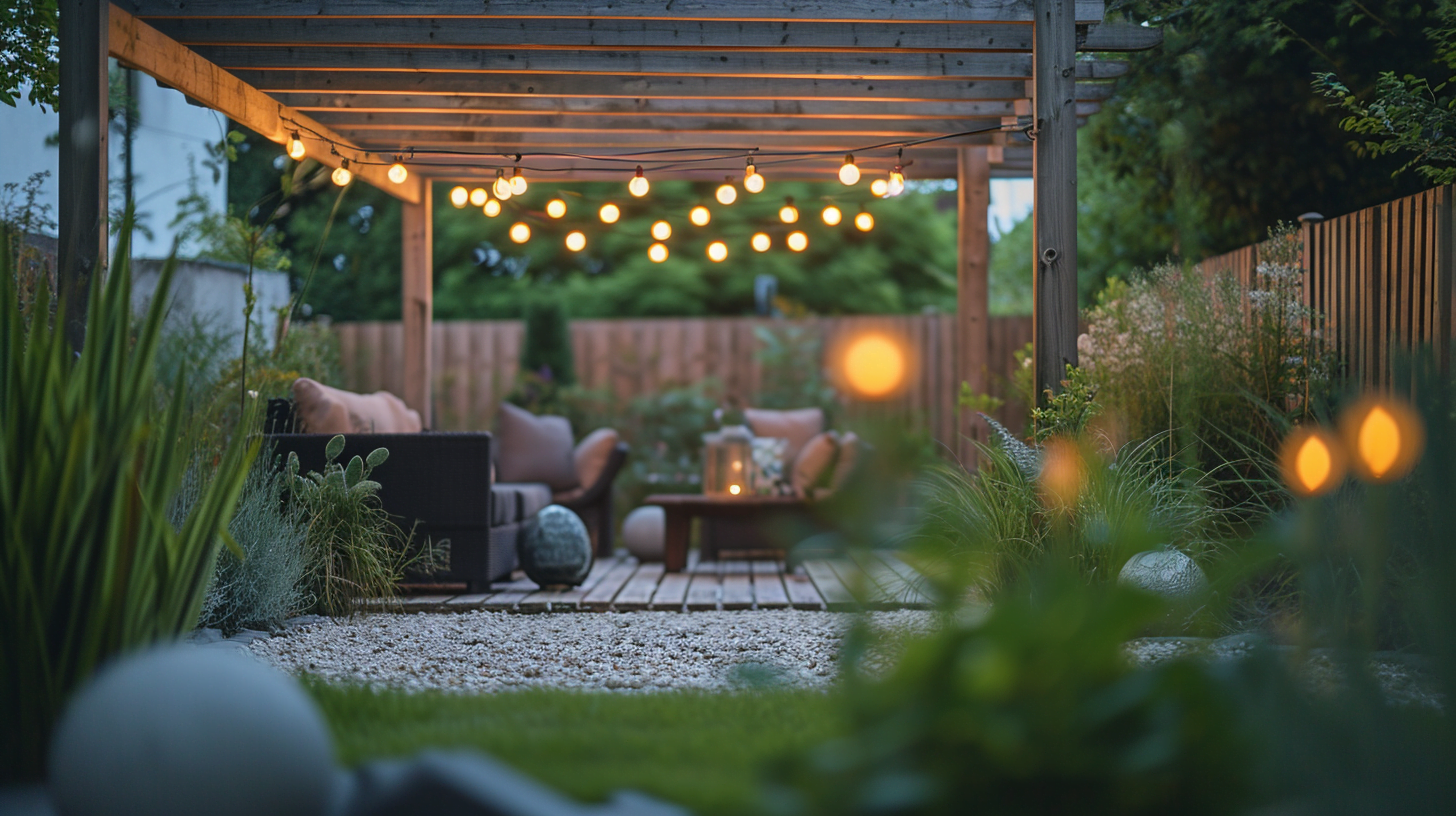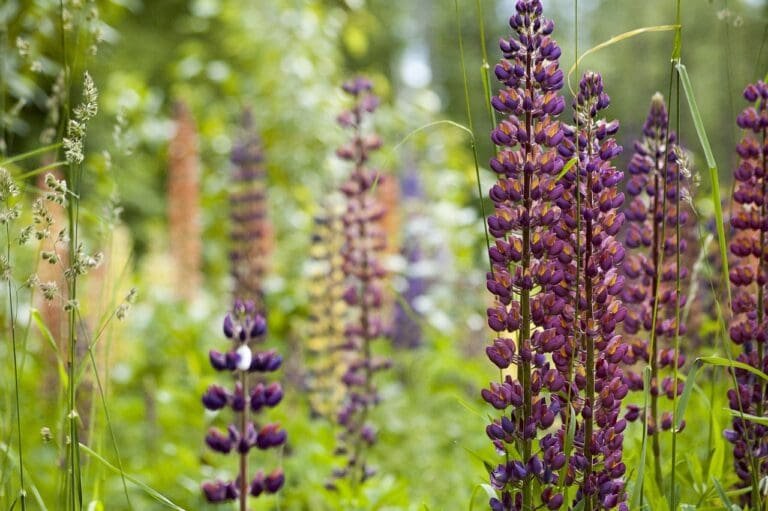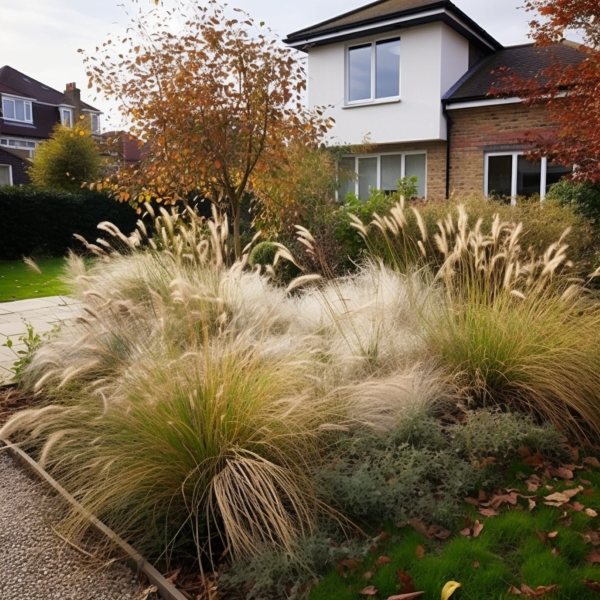Embarking on a garden project for a new build home can be both thrilling and challenging. With a blank slate, the options are vast, yet it requires thoughtful planning to craft a garden that’s both functional and aesthetically pleasing. This guide aims to inspire and offer practical advice for creating a stunning garden with these 12 new build garden ideas.
Affiliate Disclaimer: As an Amazon Associate, I earn from qualifying purchases.
You might also be interested in: Creating a Moroccan Inspired Garden
1. Curved Paths and Lawns
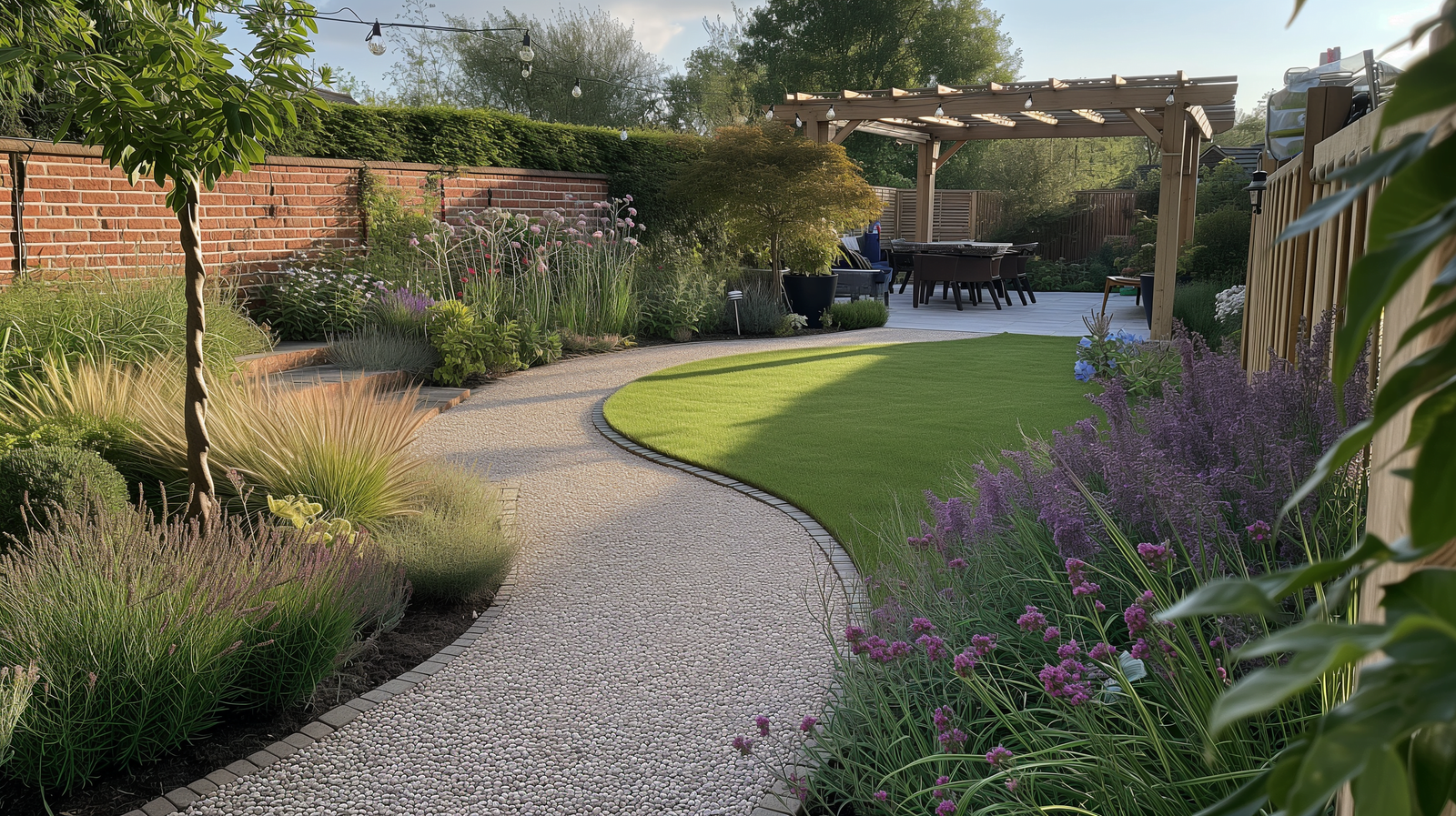
Curved pathways add a graceful and natural touch to gardens. Their sweeping, meandering design through plantings creates a captivating sense of mystery, inviting exploration. These curves are especially effective in new build gardens, where they can soften the often rigid lines and right angles.
When it comes to lawns, think beyond straight lines and sharp corners. Flowing, organic shapes like ovals or kidney designs can make your lawn more visually appealing.
For crisp lawn edges check out Core Edge. This flexible steel garden edging is a breeze to install and perfect for lawns, borders, and more. Made in the UK, it comes in various sizes and finishes, with each pack covering 5 meters.
2. Raised Planting Beds
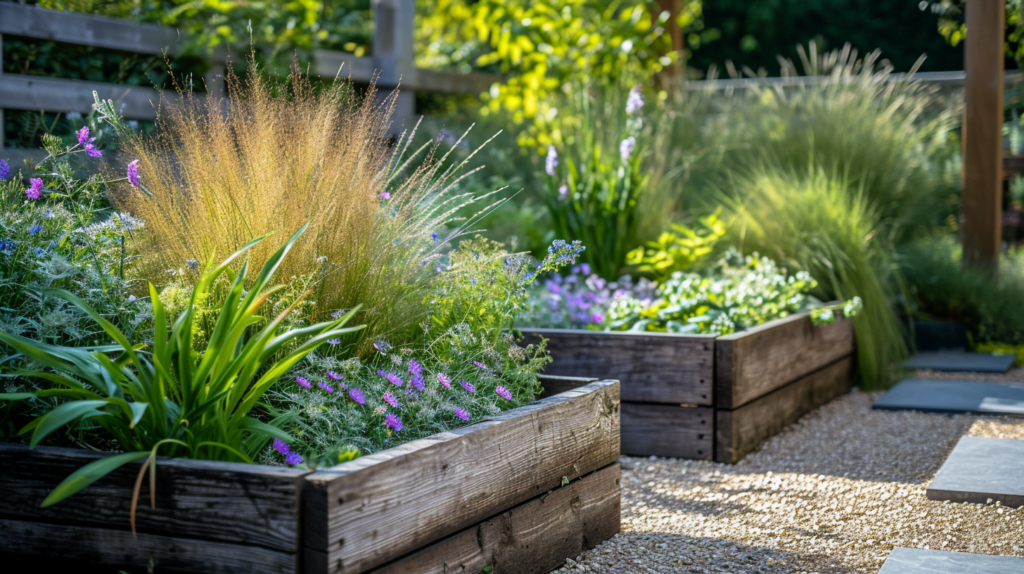
Raised garden beds offer several advantages over traditional ground-level beds. They provide better drainage and protect plant roots, as their vertical sides prevent soil compaction, promoting healthy root growth. Additionally, raised beds can help reduce back strain during planting, maintenance, and harvesting.
Metal raised beds such as this one from Blumfeldt are growing in popularity. Not only do they look great, but their zinc-aluminium steel frame and powder coating mean they can handle any weather, giving your plants the perfect home.
3. Soft Naturalistic Planting
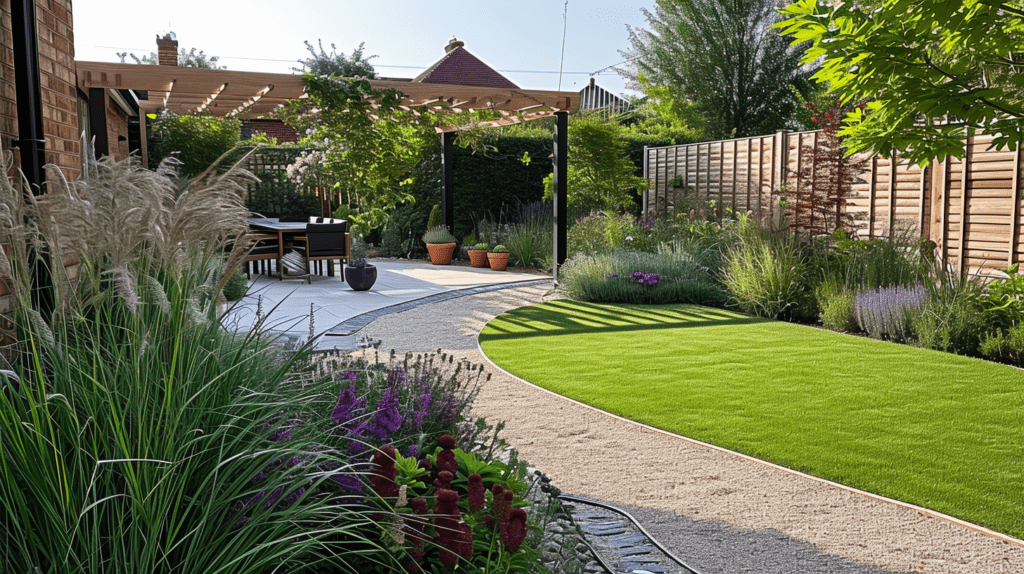
Incorporating naturalistic planting schemes with wildflowers and ornamental grasses can give your garden a soft, informal ambiance. This approach, with its rambling style, offers a beautiful contrast to the more rigid lines typical of new build homes. Using native plants not only complements the local environment but also creates a vital habitat for bees, butterflies, and other pollinators.
To add structure throughout the year, consider evergreens. For seasonal bursts of colour, plant native bulbs like crocuses or daffodils. Herbaceous perennials such as achillea, echinacea, and geranium, which bloom from spring to autumn, can ensure your garden remains vibrant for most of the year. Plant these in drifts and select varieties with different blooming times for a continuous display of colour.
4. Trees for Privacy
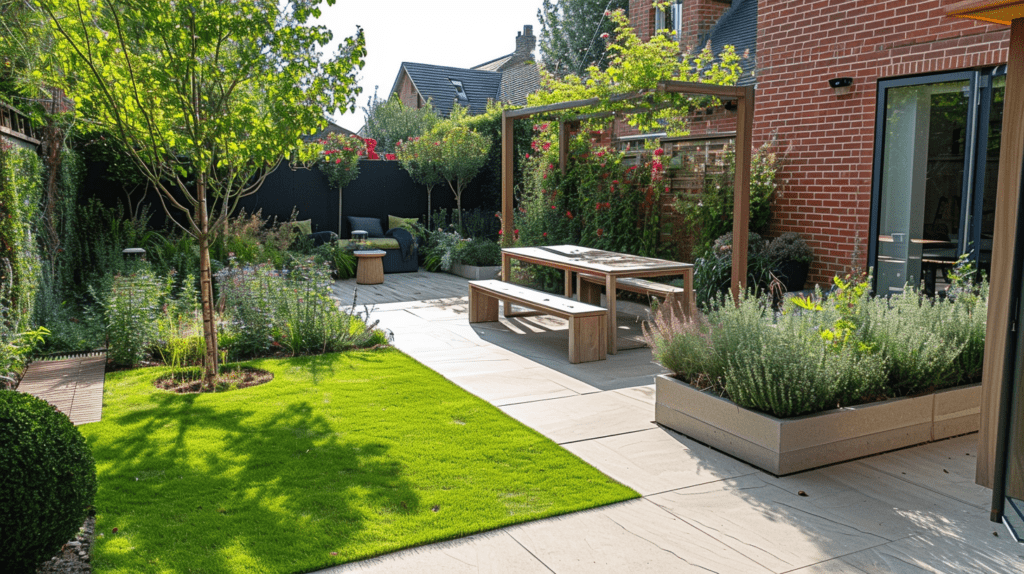
In new build homes, privacy can be a concern, so incorporating trees and tall plants is a smart way to create secluded spaces. For quick privacy screening from neighbours, a row of pleached trees can be effective. These trees are trained to form a high, leafy screen above the typical fence height.
For decorative purposes, choose ornamental species like Japanese maple, ornamental cherry, or crab apple. These trees not only provide stunning floral displays and autumn colour but also add interest when they mature. Place them near seating areas to fully enjoy their beauty and elegance.
Top Tip: To ensure privacy in your new garden, strategically position tall plants and trees, taking into account your neighbours’ sightlines.
You might also be interested in: The Best Trees For Small UK Gardens
5. Pergolas and Arbours
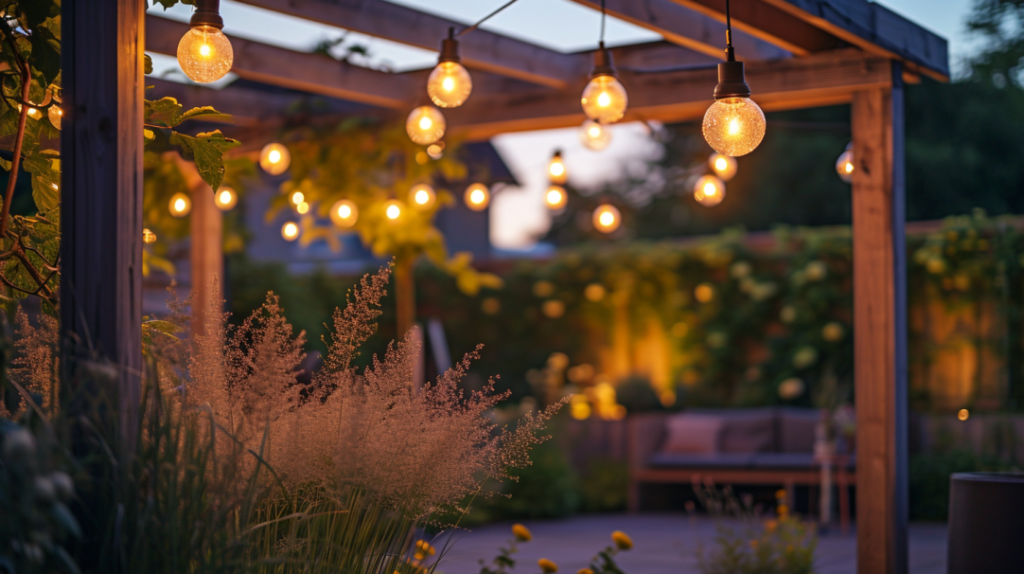
Pergolas and arbours serve as elegant structures in gardens, creating focal points and linking different areas. They can be used to define pathways, accentuate entryways, or provide structure over patios and at the edges of lawns, offering support for climbing plants.
To enhance their ornamental value, incorporate climbing plants such as jasmine, wisteria, or passionflower. Plant these at the base of your pergola or arbour and train their shoots up the supporting beams. This vertical planting approach not only softens the hard lines of the structure but also adds an element of overhead interest to your garden.
You might also be interested in: The Best Plants to Grow Over Your Pergola
6. Separate Garden Spaces
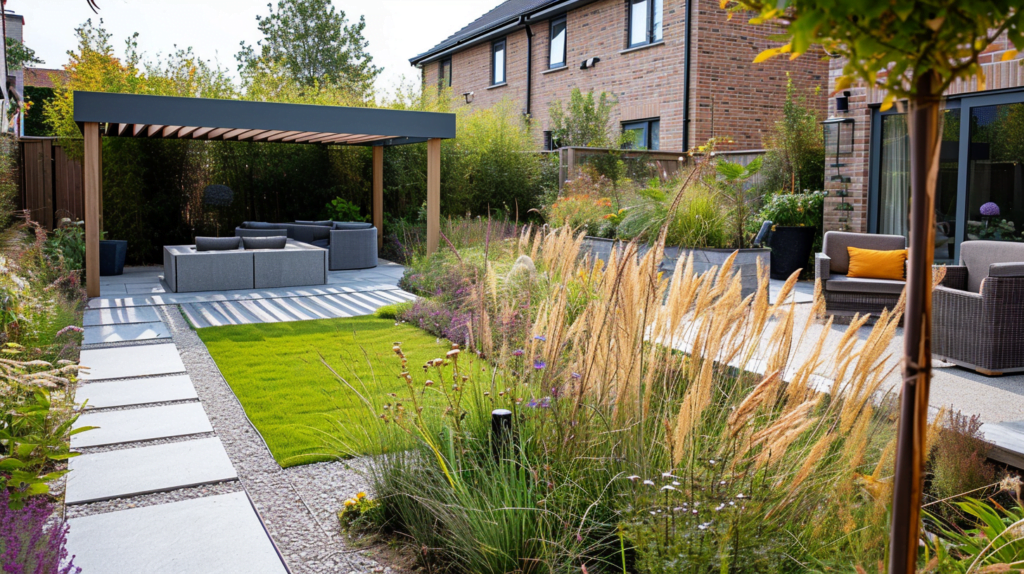
Dividing your garden into “rooms” for different activities can enhance its functionality and appeal. Instead of using solid fences, opt for softer dividers like hedging, trellis panels, or picket fencing. Differentiate these spaces with varied paving materials such as gravel, pavers, or stone.
Consider creating a cosy seating area for relaxation, nestled among lush plants. For children, a play area on the lawn with playhouses, swings, and tunnels can provide endless fun. An outdoor dining area can be a delightful addition, especially when surrounded by herbs, fruit trees, and flower beds. Use an arbour to define this space and plant climbers like jasmine to add a lovely fragrance in the evenings.
7. Evergreen Plants for Structure

Evergreen shrubs, trees, and conifers are essential for adding structure to new build gardens. They keep their foliage throughout the year, providing a constant presence even in winter. These plants are excellent for privacy screening and can serve as backdrops to accentuate other plants in your garden.
Specimen conifers like pines, spruces, and junipers bring height and distinctive architectural shapes to your garden. Underplanting them with spring bulbs such as snowdrops or miniature iris adds seasonal colour. Pairing evergreens with colorful deciduous shrubs can create a dynamic, seasonally changing display.
8. Garden Lighting
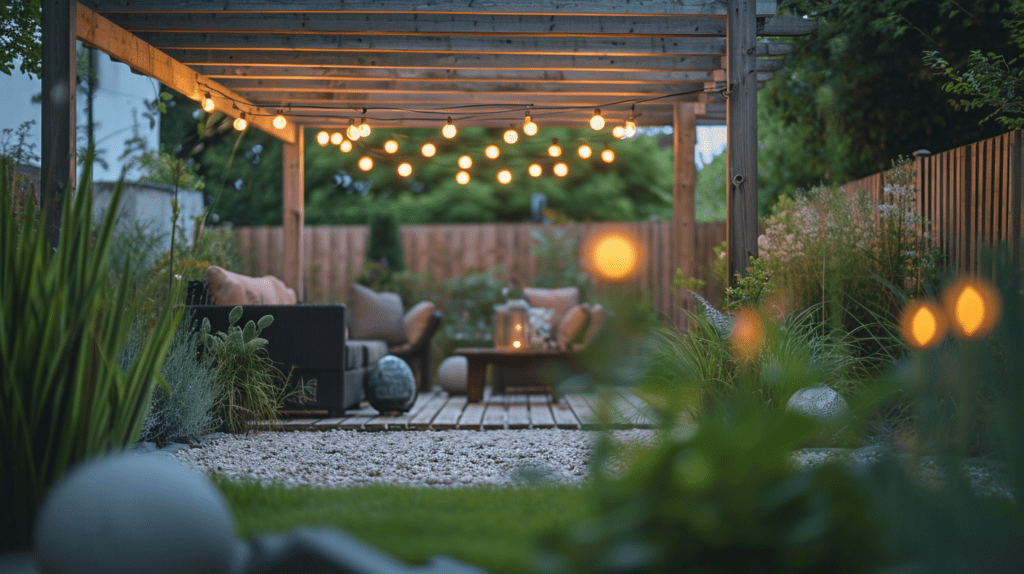
Outdoor lighting not only extends the use of your garden into the evening but also highlights potential hazards. Strategically placed spotlights on your house exterior can provide overall illumination. Adding path lights or low-voltage deck lights can significantly enhance safety, especially around steps and level changes.
For a more atmospheric setting, consider draping festoon lights over pergolas, trees, or fences. Placing lamps near seating areas can create a warm, inviting glow. Solar stake lights are a great option for adding a touch of sparkle to planting beds without the need for extensive wiring.
9. Low Maintenance Landscaping
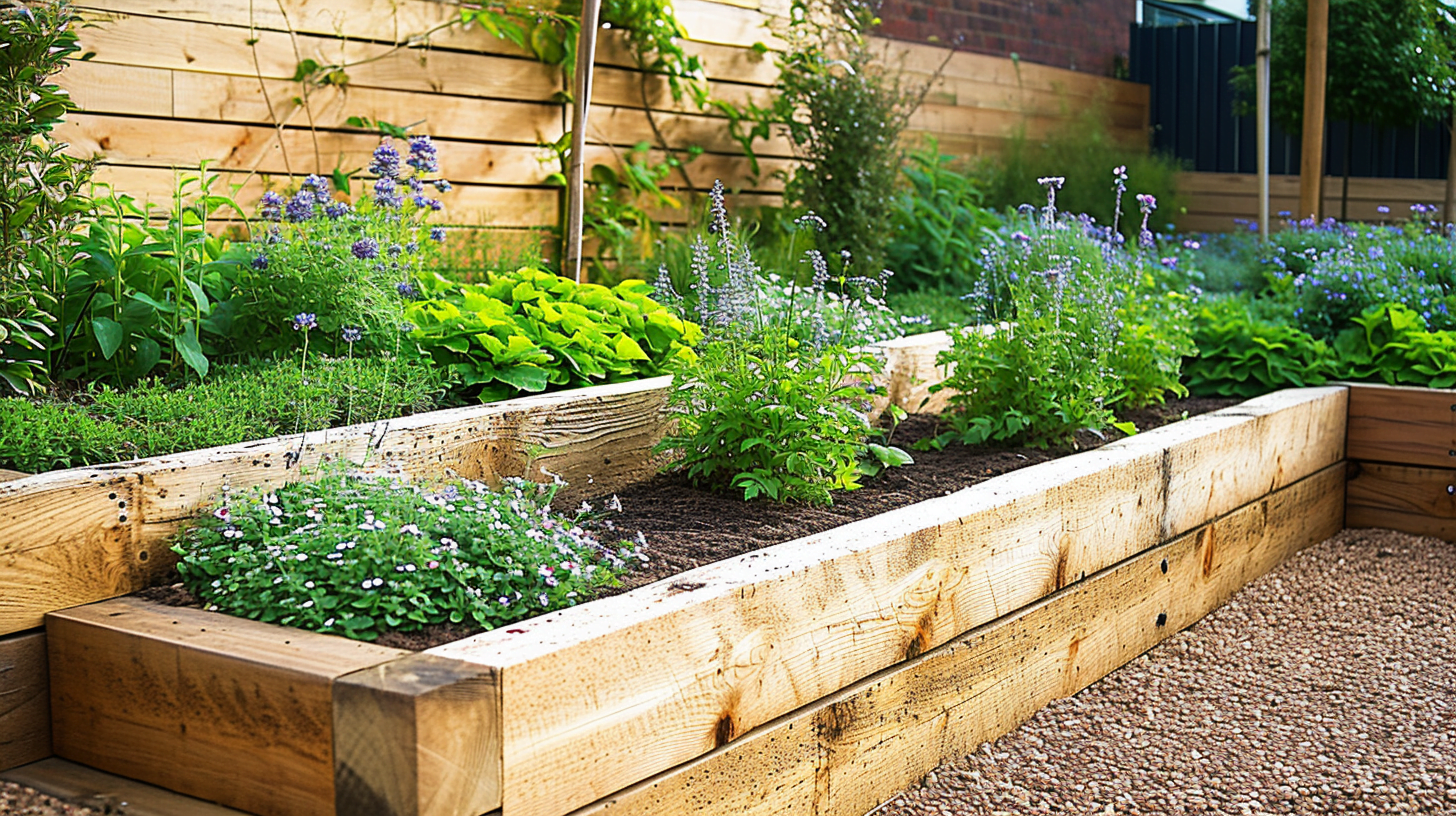
To keep garden maintenance manageable, especially in new build homes, it’s wise to reduce areas that require frequent upkeep, such as expansive lawns and labour-intensive flower beds. In low-traffic areas, consider using attractive gravel options like granite chips, pea shingle, or spar. Make sure there’s proper drainage and edging to prevent the gravel from spreading into lawns or beds over time.
Annually mulching your planting beds with compost or woodchip is an effective way to suppress weeds and retain soil moisture. In areas where you need easy access, opt for permeable paving stones or bricks instead of gravel for a tidier appearance. However, be mindful to limit the extent of paving to maintain good soil quality and drainage.
Incorporating drought-resistant plants such as lavender, succulents, and ornamental grasses can significantly reduce your watering needs. For other plants, consider installing irrigation systems with timers. This ensures efficient watering only when necessary, helping to conserve water and reduce your workload.
10. Outdoor Cooking Areas
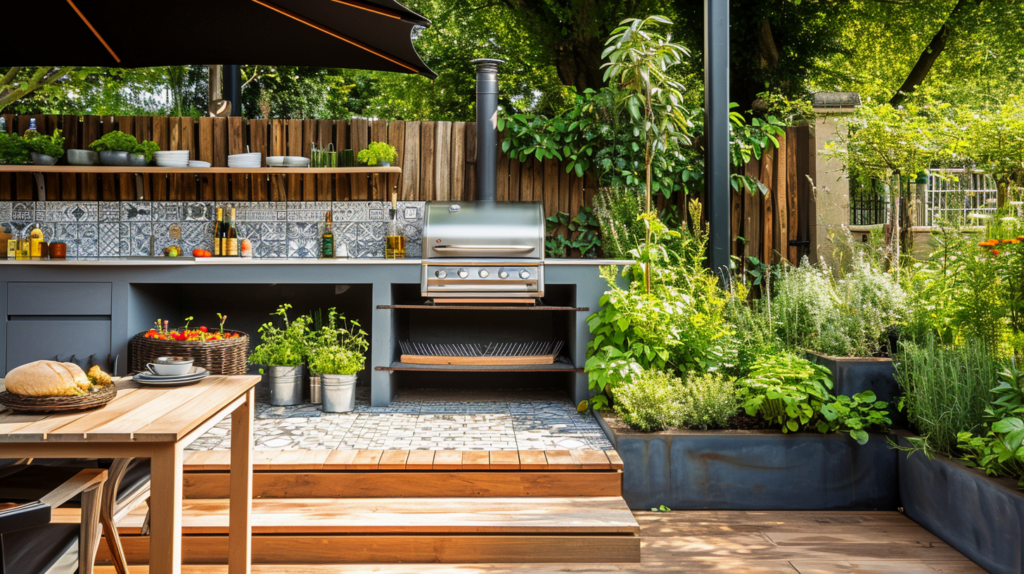
Creating an outdoor cooking and dining area effectively extends your living space, blending indoor comfort with the beauty of the outdoors. When designing this area, choose high-quality materials like natural stone or composite decking, which offer both durability and visual appeal. Make sure there’s enough room for seating, food preparation, and the cooking area itself.
Enhance your outdoor kitchen with extended counter space for food prep and serving. Materials like granite, concrete, or weatherproof outdoor cabinetry are both practical and stylish. To make the area comfortable during hot summer days, add a retractable sail shade or build a pergola for overhead shelter. Ideally, position this cooking and dining space near the house for convenient access to your indoor kitchen.
11. Water Features
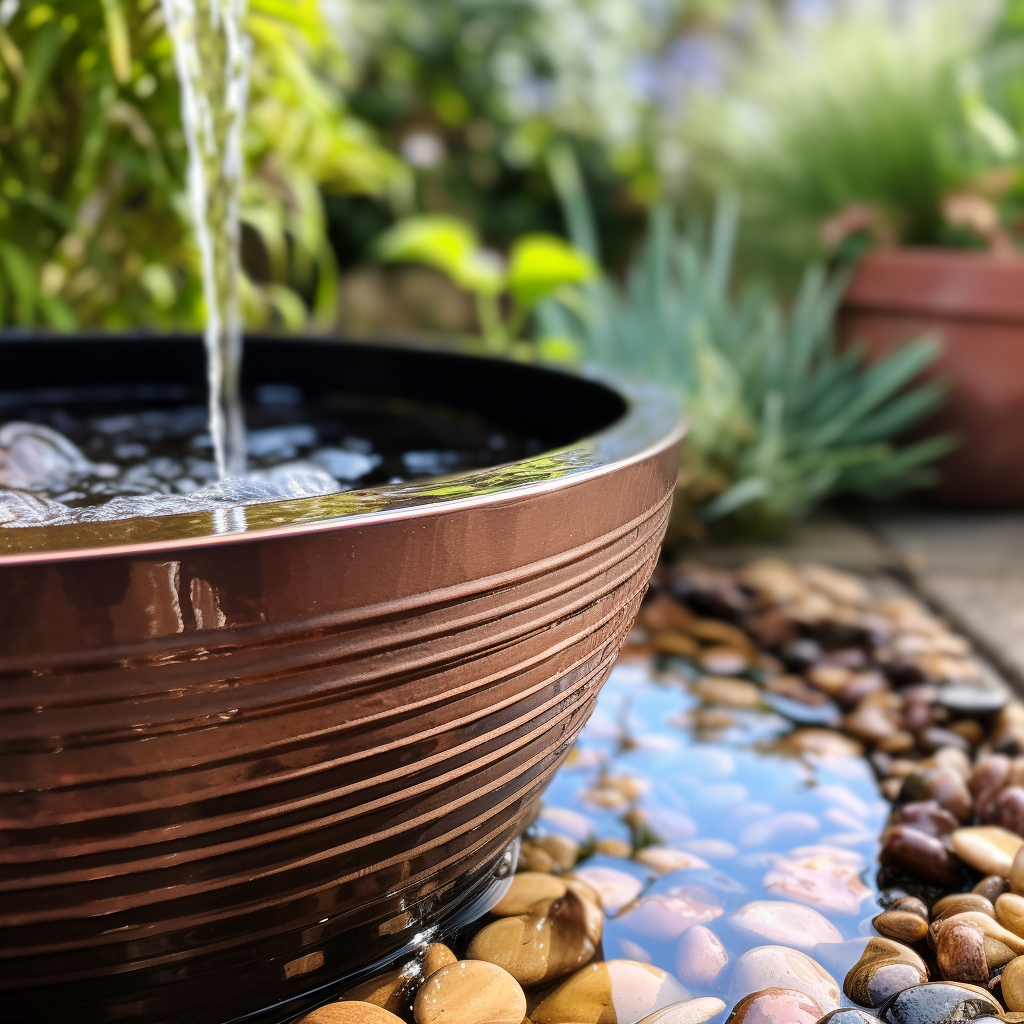
Water features bring a sense of tranquility to any garden with their movement, sound, and reflective qualities. Formal fountains, available in various shapes and sizes, can fit different spaces and budgets. For a modern touch, consider a stainless steel cube fountain set in a minimalist gravel garden.
If you prefer a more natural look, informal ponds or streams bordered by marginal plants like irises, reeds, and rushes can create a beautiful, organic feel. Make sure your pond or stream has adequate depth, proper filtration, and water plants to maintain a healthy ecosystem. For smaller spaces, a shallow container pond or a simple birdbath can offer the soothing presence of water.
12. Create Seasonal Interest
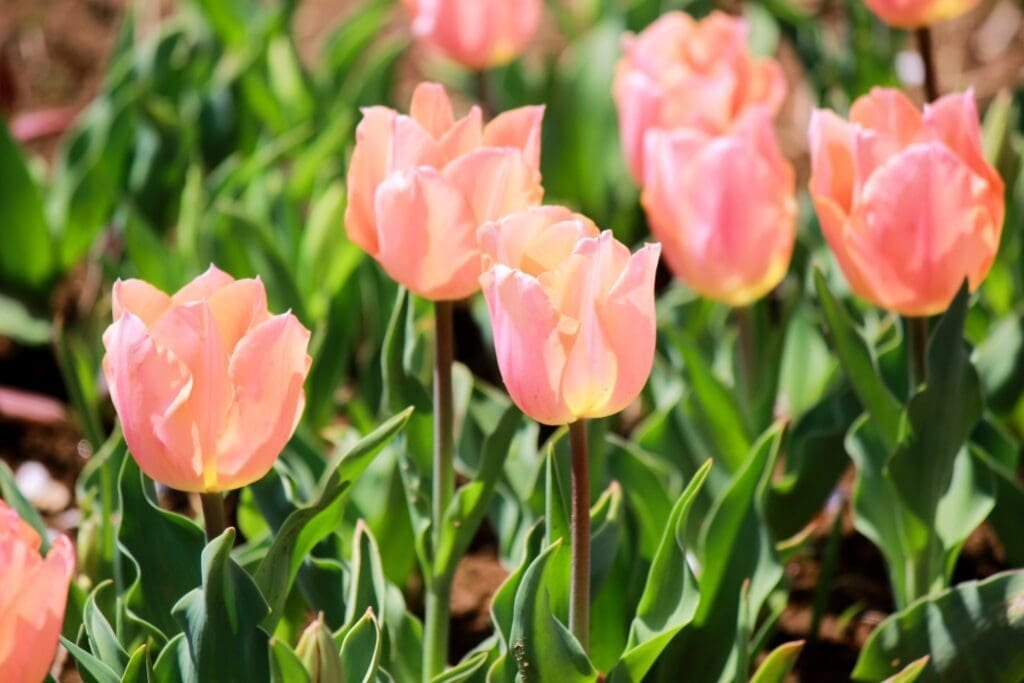
In a garden where structure and form are constants, seasonal plants bring evolving color and texture throughout the year. Evergreen shrubs such as camellias and skimmia offer early blossoms, while summer perennials like echinacea and rudbeckia continue to flower into autumn.
Ornamental grasses contribute both movement and structure in winter. Compact evergreen and variegated varieties, such as Carex and Liriope, maintain a year-round presence. In winter, plants with colorful stems, like dogwood or willow, stand out beautifully against the more subdued landscape.
To fully embrace the changing seasons, select plants and decorative elements that highlight each time of year. Welcome spring with snowdrops and tulips, enjoy vibrant container plantings in summer, marvel at the autumn colours of Japanese maples and euonymus, and round off the year with winter berries and evergreen foliage.
Final Thoughts – New Build Garden Ideas
With thoughtful planning and design, gardens in new build homes can be transformed into stunning, personalized spaces that reflect your unique needs and tastes. Adhering to basic landscaping principles lays a functional and professional foundation for your garden. Incorporating special structures like pergolas and implementing zoning can create distinct areas for relaxation or play. Choosing the right plants ensures your garden remains interesting and structured throughout the year, while also keeping maintenance requirements in check.

